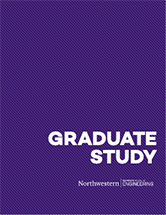MSiA ’14 Andy Fox and Team Place Second in INFORMS 2014 Doing Good with Good Competition
MSiA ’14 student Andy Fox and a team of IEMS researchers recently received second place in the INFORMS Doing Good with Good OR Student Paper Competition. The team also included IEMS faculty member Karen Smilowitz, IEMS undergraduate Tessa Swanson, and Jim McGowan of the American Red Cross, Greater Chicago Region, all of whom began work on the project in summer of 2013. After a year of research and analysis, the team presented their paper, “Volunteer Engagement in the Age of Analytics: A Case Study with American Red Cross, Greater Chicago Region,” at the INFORMS conference in San Francisco.
Where many studies of public sector work focus on political campaign targeting, or on vehicle routing and mobility (the first place winner at INFORMS, for instance, wrote on Citi Bike sharing in NYC), Andy and the team explored the area of volunteer engagement. American Red Cross, Greater Chicago Region (ARCGCR) dispatches volunteers 1,200 times every year to respond to natural and manmade disasters throughout Chicagoland. Volunteers engage with clients daily, providing them with resources like food and shelter during times of duress. Drawing on data compiled by ARCGCR’s volunteer database, the team focused their analysis on solutions to make volunteer deployment more efficient—finding, for instance, that volunteers accepted jobs based on a “radius of comfort” that included interconnected factors like distance, time of day, and neighborhood.
The analysis also took into consideration ARC’s mission to provide volunteers with meaningful experiences. Research found that around 12% of volunteers receive 70% of the opportunities to participate, meaning that long-time volunteer “veterans” are more likely to respond positively to calls-to-action. This often results in dispatchers calling volunteers based on reputation, rather than providing opportunities to new or less-experienced ones. The team concluded that ARCGCR should therefore focus on building the reputations of new volunteers and to align them with jobs they’d be more likely to take, in order to maintain their continued support. Proposals such as the implementation of a data-driven scheduling system will greatly enhance both volunteer response and commitment.
Only recently have non-profits begun to make use of leading analytics tools. “Non-profits like Red Cross are collecting lots of data that can be used in new ways,” Andy said, but the work is engaging because, as he explained, “you can see the effects [of our analysis] really fast.” The work he and his team at IEMS and ARCGCR did with this project is innovative, and is just the tip of the iceberg in terms of what analytics is capable of providing to the public sector.
Less than a month from graduation, Andy is grateful for the experience the project has given him, and for the flexibility MSiA afforded his research. In addition to the program’s applied curriculum, extra-curricular case studies and access to faculty projects provides students with skills that are applicable to both the private and public sectors. “MSiA gives you the freedom to work on side projects,” he said. “Doing this helped me to understand how non-profit analytics work and how I fit into that space.”


